Table of contents
Agave syrup , also called agave nectar , is a sweetener obtained from the agave plant and used as a sugar substitute to sweeten drinks and food. Due to the heating during production, agave syrup is usually not raw . Available in organic quality.
Use in the kitchen
Agave syrup or agave syrup, a food made from agave juice, is a natural, vegan sweetener that is best known as a substitute for household sugar . It is also a vegan alternative to honey . 1 Agave syrup is slightly thinner than honey. Its color ranges from almost transparent to amber to dark brown (unfiltered). The color of the syrup indicates its taste. Light agave syrup is almost tasteless, while dark syrup has a pronounced caramel note. It is also very sweet due to its high fructose content and has a strong sweetening power. Much less agave syrup is needed than sugar to achieve a comparable sweetness: 100 g of sugar can be replaced with 75 g of agave syrup. But be careful: Since household sugar not only serves as a sweetener in some foods (mostly baked goods), but also contributes to the consistency, agave syrup is not always suitable as a substitute due to its low tendency to crystallize.
However, because it is easily soluble, it is particularly suitable for sweetening drinks (e.g. lemonades, iced teas, non-alcoholic drinks, vegan shakes, coffee, tea) and more liquid foods. Agave syrup is often used in desserts such as creams, sorbets and cakes and breakfast dishes such as muesli, porridge, pancakes and smoothie bowls. It can also be used to refine all kinds of soups, sauces, marinades and salad dressings. Agave syrup works particularly well in a mustard sauce with autumnal oven-baked vegetables with beetroot, Hokkaido and sweet potatoes or in a mint sauce with cucumber rolls with vegan "goat's cheese" . Sweet potatoes , potatoes or carrots fried in agave syrup with a little rosemary are also recommended. The sweetness of agave syrup also goes wonderfully with a lentil salad with apples , pomegranate seeds and red onions or with pasta.
Vegan recipe for soft wheat semolina porridge with agave syrup
Ingredients (for 4 people): 800 ml soy drink , 8 tbsp soft wheat semolina , ¼ tsp cardamom (ground), ¼ tsp turmeric (ground) , 1 pinch of saffron , 4 tbsp hazelnuts (chopped), 1 tbsp agave syrup (preferably raw and organic).
Preparation: Put the soy drink, soft wheat semolina, cardamom, turmeric and saffron in a pan, stir and bring to the boil. Simmer for 2-3 minutes while stirring. Add the hazelnuts. Remove the vegan soft wheat semolina porridge from the stove and sweeten with agave syrup.
Vegan recipes with agave syrup can be found under the note: " Recipes that have the most of this ingredient ".
| Not only vegans or vegetarians should read this: Vegans often eat unhealthily. Avoidable nutritional mistakes . |
Purchasing - Storage
Agave syrup is available all year round in most supermarkets (e.g. Coop , Migros , Spar , Aldi , Lidl , Rewe , Edeka , Hofer , Billa ). At Denner and Volg you can only find the syrup during special promotions. Organic supermarkets (e.g. Denn's Biomarkt , Alnatura ) offer organic agave syrup.
The availability of agave syrup varies depending on the size of the store, catchment area, etc. Our recorded food prices for the DA-CH countries can be found above under the ingredient image - and by clicking on them you can see their development at various suppliers.
Is agave syrup raw? In stores (especially online shops) you can occasionally find agave syrup labeled as raw. Since there are no strict regulations for the "raw" label depending on the country, raw foodists should inform themselves well about the production of the product advertised as raw.
Storage tips
Agave syrup is best stored in a dark, cool place (eg in a kitchen cupboard). Its shelf life cannot be extended by storing it in the fridge. The syrup keeps for a very long time anyway: around 18 months both unopened and opened. Keep the lid of the opened container clean to keep germs away.
Ingredients - Nutritional values - Calories
What is the nutritional value of agave syrup? Agave syrup is extremely high in calories with 310 kcal per 100 g. It contains 76 g/100 g of carbohydrates, the majority of which (68 g) is sugar. The protein content is low at 0.09 g/100 g and there is also little fat at 0.45 g/100 g. 2 The following are three notable agave syrup nutrients.
Does agave syrup contain vitamins? 100 g of agave syrup contains 22 µg of vitamin K (30% of the daily requirement). Date syrup (0.88 µg/100g) contains much smaller amounts of the vitamin, while apple syrup (42 µg/100g) contains slightly more. Significantly more can be found in common dandelion at 778 µg/100g. 2
Agave syrup also contains 17 mg of vitamin C per 100 g (21% of the daily requirement). Again, date syrup (6.7 mg/100g) contains less of the vitamin and apple syrup (52 mg/100g) contains more. Honey also contains vitamin C, but only in very small amounts (0.5 mg/100g). Yellow bell peppers contain a particularly high amount of vitamin C, at 184 mg/100g. 2
The vitamin B 6 (pyridoxine) content is 0.23 mg/100g (17% of the daily requirement). This is most comparable to that of the sweetener carob powder (0.37 mg/100g). Date syrup (0.09 mg/100g) and honey (0.02 mg/100g) contain less vitamin B 6 , while apple syrup (0.63 mg/100g) contains more. Yeast flakes contain more than 12 times the vitamin at 2.9 mg/100g. 2
Agave syrup composition: Agave syrup has a high carbohydrate or sugar content and consists mainly of fruit sugar (fructose, fructose; approx. 80%), followed by glucose and traces of sucrose and the fructans (polysaccharides from fructose; also called agavins) nystose and kestose. Polyphenols are known as secondary plant substances contained in agave syrup. 1
The complete ingredients of agave syrup, the coverage of the daily requirement and comparison values with other ingredients can be found in our nutrient tables. In the article Nutrients explained you will get a detailed insight into the topic.
Effects on health
Is agave syrup healthy? Due to the specific carbohydrate composition, or rather the high fructose content, agave syrup has a low glycemic index (GI) of between 10 and 19, which means that agave syrup only causes blood sugar levels to rise slightly and slowly. In comparison: household sugar has a GI of 65. Glucose, with a GI of 100, forms the basis for the glycemic index. 3,4
Agave syrup contains bioactive compounds such as phenols and proanthocyanidins, which have an antioxidant effect. The color of agave syrup is related to the content of pigments with an antioxidant effect - darker syrups have a higher content of phenols and proanthocyanidins, thus a higher antioxidant effect of agave syrup. 1.5
Other compounds found in agave syrup are agavins (fructans), reserve carbohydrates of the agave plant that consist of fructose polymers and a single glucose, such as nystose and kestose. They are considered prebiotic substances. 1
Is agave syrup healthier than honey? This question is difficult to answer in general terms. Although agave syrup has a lower GI than honey, both contain a lot of sugar. Read more about honey in the related article.
Dangers - Intolerances - Side effects
Is agave syrup unhealthy? Agave syrup is popular in many places because of its low glycemic index, which is due to its high fructose content, which is much lower than that of honey and table sugar. However, it is controversial whether agave syrup is actually a healthier alternative to sugar or other sweeteners. Recent research shows that excessive fructose consumption is linked to the accumulation of fat in the liver. This is associated with cardiovascular disease, insulin resistance and other diseases. 1 Excessive consumption of agave syrup is therefore not recommended.
Due to the high fructose content, people with fructose intolerance should avoid consuming agave syrup. 6
Like other sweeteners, agave syrup is harmful to oral health and teeth. Bacteria on tooth surfaces metabolize fructose into acid, which leads to a drop in the pH value in plaque and demineralization. Moderate consumption helps here too. You should also rinse your mouth with water after eating sweet foods and brush your teeth regularly. This is because when the pH value rises to over 5.5 after about 20-30 minutes due to the acid being drained away, the tooth enamel can rebuild and repair itself with the calcium and phosphate released from the saliva. 7
Folk medicine - naturopathy
The use of concentrated agave syrup for wound treatment was widespread among the Aztecs and has been preserved in folk medicine. 8
Ecological footprint - animal welfare
The ecological footprint of a food depends on various aspects, such as cultivation method (conventional/organic), seasonality, country of origin, transport and, if applicable, packaging. The production and processing of blue agaves ( Agave tequilana ), which are often grown in monocultures and are used, among other things, to make agave syrup, caused an estimated 700,000 tonnes of CO 2 -eq in 2014. 44% of these greenhouse gas emissions were generated in the agricultural and industrial phase, the remaining 56% were due to the production of operating resources (such as crop protection and fertilizers) and the transport and distribution of the product. In the agricultural phase (at least in conventional cultivation), the largest contribution was made by the use of nitrogen fertilizers. 1
Certified organic agave syrup is the most sustainable option on the market, as organic production avoids the use of chemical-synthetic pesticides and fertilizers that are harmful to health and the environment.
If you want to avoid products that have to be transported over long distances, you should choose regional syrups such as apple syrup or pear syrup ("Birnel") instead of agave syrup from Mexico. 9
Animal welfare - species protection
Agaves only flower once before they die. In the past, farmers allowed agave plants to mature until they flowered because this is when they also release the most nectar. The increasing demand for agave syrup and tequila (also made from agave) put farmers under enormous pressure to supply enough agave. To shorten growth cycles, they harvest agave before it flowers. This deprives bats, which are important pollinators of agave plants, of an important food source. Without flowering, seed-producing agaves, farmers are increasingly dependent on clones (genetically identical offshoots) to plant the next crop. The lack of genetic diversity means that the plants are at a much greater risk of disease and threatens the survival of culturally important agave varieties. 10
Worldwide distribution - cultivation
The agave ( Agave spp.) grows in dry and semi-arid areas and adapts to periodic water supplies through photosynthesis and crassulacean acid metabolism. Agaves are widespread in Central and North America, but a large proportion of the species (approx. 55%) are native to Mexico - the origin and center of agave diversity. Both the consumption and socioeconomic impact of the agave date back to pre-Columbian times - the high sugar content was known at that time. 1
The most commonly used agave species for agave syrup production are: Agave tequilana (blue agave or tequila agave), Agave americana (American agave), Agave potatorum , Agave salmiana and Agave atrovirens . 1
Industrial production
The process for producing agave syrup begins with the harvest of mature 5-7 year old (usually blue) agaves. The plant's high carbohydrate content is stored in the agave seeds (Spanish: piñas), which (removed from the leaves) look similar to pineapples . A high-quality piña (weighing up to 68 kg) contains around 25-30% sugar. The next phase consists of grinding and crushing the seeds to obtain juicy fibers. Agave juice is obtained by washing with hot water, removing the fibers and filtering. The juice is hydrolyzed by heating (80 °C) for 8-12 hours before being filtered again. Another filtration reduces the water content. The juice is then subjected to vacuum evaporation (90 °C) to denature the glycosidic activity. This creates the final product, agave syrup. 1
Mexican regulations prohibit the use of food additives, ingredients or sugars from sources other than agave plants in the commercial production of agave syrup.1,5 Therefore, a high-quality agave syrup should only contain agave.
Note: Raw agave syrup thickening takes place at lower temperatures, although for raw food quality this process should theoretically never exceed 42 °C. Due to the lack of strict regulations for the "raw" label, it is often questionable whether the agave syrups labelled as raw are actually raw food products.
Further information
In addition to agave syrup, there are the following sugar alternatives: apple syrup , pear syrup, date syrup , maple syrup , rice syrup , corn syrup , stevia leaves and carob powder . Another variant that is not suitable for all vegans is honey .
Alternative names
Agave syrup is often also called agave syrup. Agave nectar is another synonym.
In English, agave syrup is called agave syrup, maguey syrup or agave nectar.
Other uses
In Mexico, agaves are used not only to make agave syrup, but also alcohol such as mezcal or tequila and vinegar. 9

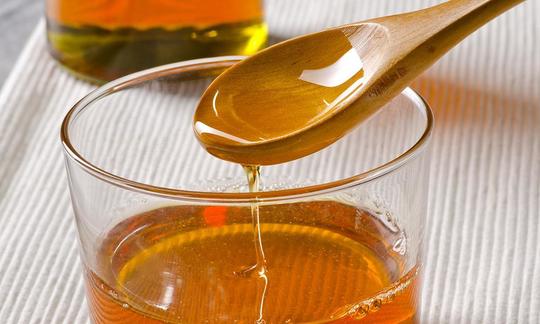

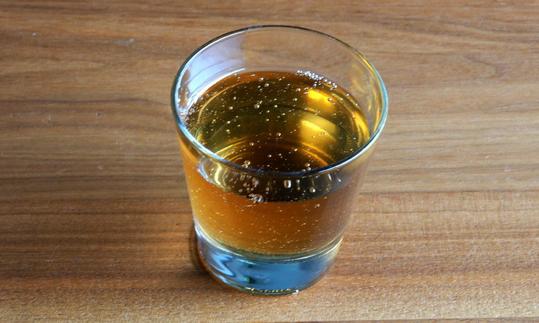

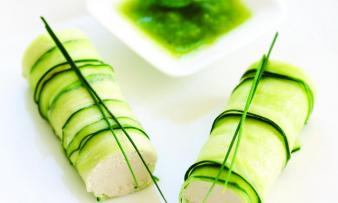
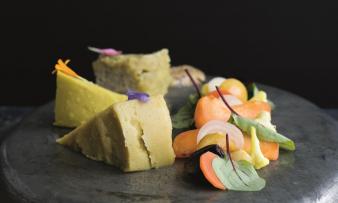
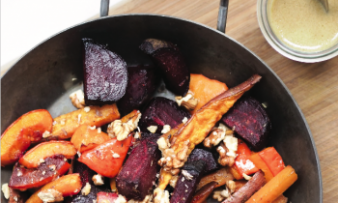





Comments